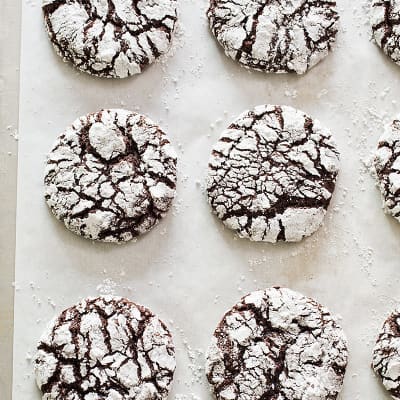Let’s say you love to bake with chocolate. Deep, fudgy flavor is paramount, but just as much you crave the rich, moist tenderness that truly sublime cakes, cookies, and brownies deliver. So you measure the ingredients with precision, dutifully rotate the pan midway through baking so that the batter gets even exposure to the heat, follow all the doneness cues, and muster the willpower to let the treat cool completely before cutting a slice, lest steam escape and leave the crumb dry.
Is Your Chocolate Cake Dry? You Might Be Using the Wrong Cocoa Powder.
Published July 20, 2022.

But the crumb is still dry. Its flavor is even a tad dull.
Before you start second-guessing your meticulousness as a baker, check the cocoa powder’s nutrition label. Chances are, it’s relatively low in fat.
Sign up for the Cook's Insider newsletter
The latest recipes, tips, and tricks, plus behind-the-scenes stories from the Cook's Illustrated team.
Cocoa Powder’s Fat = Flavor, Tenderness, and Moistness
If you didn’t even realize cocoa powder fat content was a consideration, you’re not alone. Most cocoa-conscious bakers zero in on the merits of natural powders versus those that are Dutch-processed—that is, treated with an alkali that darkens the powder’s color and mellows its astringent notes. And while Dutching is, indeed, an important factor to consider, fat content might be even more so—especially when it comes to the moistness of your chocolate cake.
While developing her recipe for Chocolate Sheet Cake, senior editor Annie Petito tried multiple cocoa powders and noticed that the cakes made with high-fat powders—meaning those that contained at least 20 percent fat by weight—baked up significantly more moist and tender than those made with low-fat cocoas containing roughly half as much fat. Deputy editor Kate Shannon came to the same conclusion when she tested 8 different cocoa powders in both cakes and cookies. The explanation was twofold: Fat adds richness and flavor, and high-fat cocoa powders contain less starch.
More Fat in Cocoa Powder = Less Starch
Starch, a natural component of all chocolate and cocoa powder, is highly absorbent and can trap moisture in baked goods, leaving them dry and crumbly. And the amount of starch cocoa powder contains is directly proportional to its fat content: The less fat cocoa powder has, the more starch it contains, and vice versa.
Here’s visual proof of how much it matters: The cocoa powder–water slurry on the left, which we made with high-starch, low-fat powder, is stiff and pasty, while the one on the right, made with low-starch, high-fat cocoa, is more moist and runny.
How to Determine a Cocoa Powder’s Fat Content
A Dutch-processed cocoa powder that’s high in fat and therefore low in moisture-absorbing starch, like Droste, is your best bet for moist and tender chocolate-y baked goods. All you have to do is check the nutrition label: Look for products with at least 1 gram of fat per 5-gram serving.





